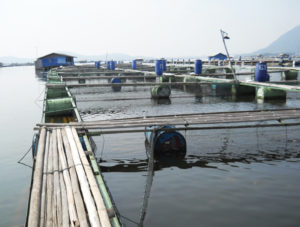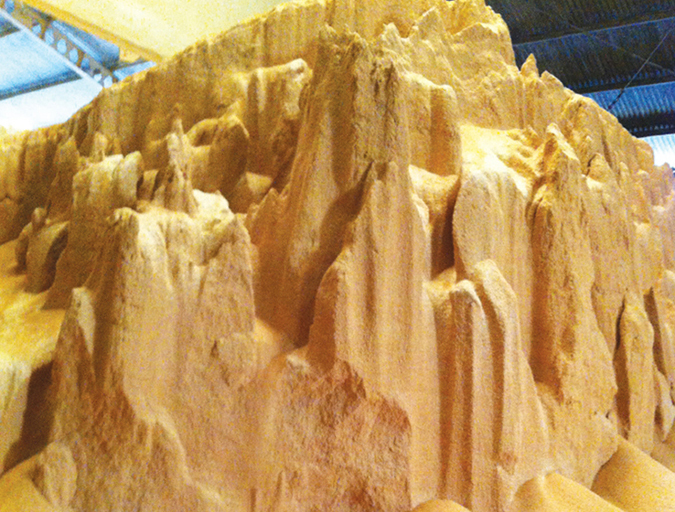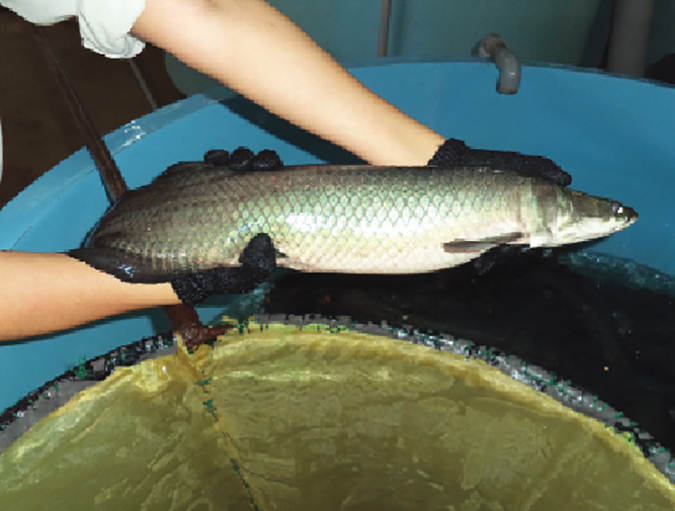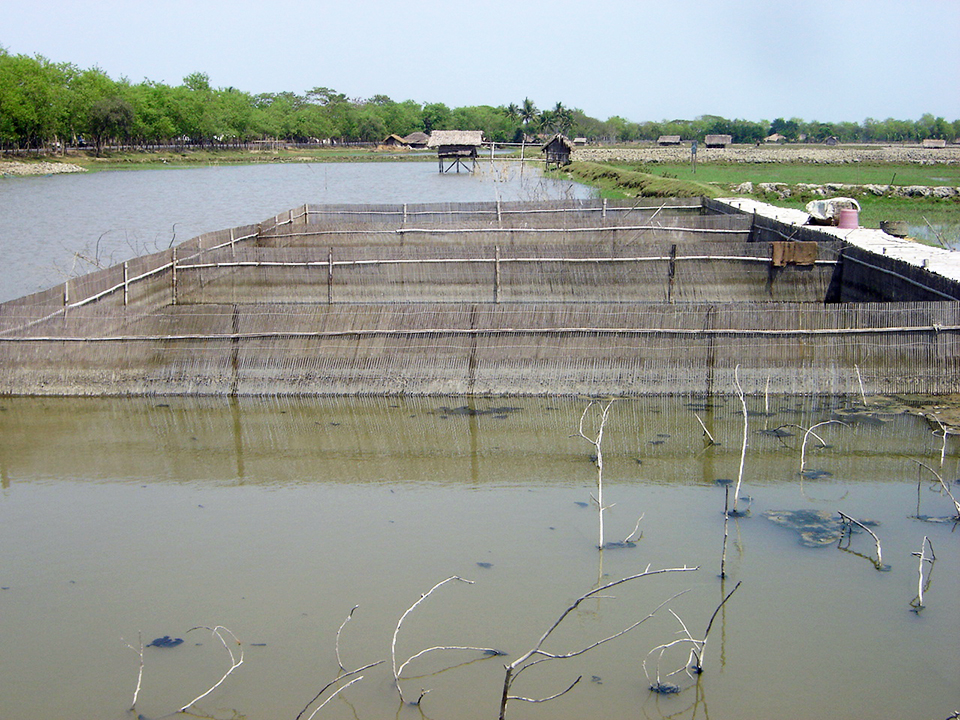Who can best address carrying capacity and how can we develop a training program?

At the United States Soybean Export Council (USSEC) 2011 meeting on Global Soy in Aquaculture in Kona, Hawaii, USA, Lukas Manomaitis and Hsiang P. Lan identified the modeling of common water bodies to determine aquaculture carrying capacity as a critical need for Southeast Asia. As evidenced elsewhere, overdevelopment of aquaculture can result in environmental problems and excessive disease and mortality of cultured fish.
Aquaculture is expanding rapidly in Southeast Asia, and there is great potential to exceed carrying capacities in places beyond those ecosystems that have already experienced impacts from aquaculture.
USSEC wants to see stable development of the aquaculture industry in the region, which represents a promising market for soy-based aquaculture feeds. With 626 billion people, Southeast Asia is larger than the Japanese, North American, or European Union markets individually, and they consume about 17 million metric tons (MT) of seafood annually. Although much of Southeast Asia’s aquaculture production is becoming certified by third-party mechanisms for export, large amounts of production for domestic consumption are not subject to such certification and often see little or no regulation.
Assessing needs
The United Soybean Board contracted the author to work with USSEC to assess the needs and capabilities of the countries in Southeast Asia to conduct modeling of carrying capacity, and to hold a workshop to develop a regional approach to the use of capacity modeling in aquaculture development.
We can broadly define aquaculture carrying capacity as the ability of an ecosystem to accommodate aquaculture, but more specific carrying capacities have also been defined. These include physical capacity, the maximum amount of aquaculture units that can physically fit in a water body; and production capacity, the maximum amount that does not cause unacceptable impacts to the farms themselves.
Ecological capacity is the maximum amount of activity that does not cause unacceptable impacts on the ecosystem. Similarly, social carrying capacity is the maximum level that does not cause unacceptable impacts on human society.
Modeling impacts
In 2012 and 2013, the author visited regulators as well as aquaculture sites, in Indonesia, Malaysia, Myanmar, the Philippines, Thailand and Vietnam to assess modeling of aquaculture’s impacts on ecosystems. A separate project to do similar work in Cambodia was begun in 2013 with U.S. Agency for International Development funding via the Aquafish Innovation Lab at Oregon State University.
The main findings were similar for all the countries. First, these countries would like to have and use models for lakes/reservoirs, rivers, and bays/estuaries. However, modeling capability seems limited, at least in agencies responsible for aquaculture, and data to put into the models are quite limited, as well. In addition, there is uncertainty or disagreement within countries about how to properly balance the needs of farmers with protection of ecosystems.
Since exceeding carrying capacity in many places makes the industry very inefficient due to high levels of disease or mortality, it is likely farmers could be convinced to alter practices based on economic reasons, not just ecological ones. Whatever national regulators think, permits are largely distributed at the local level, so farmers and local officials must be educated about these overcapacity issues.
Regional workshop
Because the countries have similar problems and might benefit from a regional approach to managing carrying capacity, a two-day regional workshop sponsored by USSEC was held last June in Bangkok, Thailand. It was attended by 24 country representatives from seven Southeast Asia countries, four outside speakers and four USSEC personnel.
The objectives of the workshop were to discuss issues of aquaculture carrying capacity in the Southeast Asia region and introduce participants to modeling and spatial-planning tools for carrying capacity. The event hoped to identify and prioritize aspects of carrying capacity that can be addressed on a regional basis.
After considering the issues for two days, the participants unanimously agreed on a list of 12 recommendations focused on science, training and development of experts in the region, examining socioeconomic issues associated with aquaculture carrying capacity and obtaining funding for national and regional efforts related to capacity concerns.
Perspectives
Although the regional approach is still taking shape, efforts at determinations of carrying capacities in the individual countries are proceeding, both by members of the group and others. Several interesting questions have emerged about aquaculture carrying capacity and its implementation.
The first question is whether carrying capacity is better addressed by governments or by industry. Governments often work slowly, but industry can work quickly when its self-interest is at stake.
The second question is, given that aquaculture is usually permitted by local officials, how can we develop a training program to help those officials understand the need for limiting permits? In 2013, Dr. Michael Rice of the University of Rhode Island developed such a program for officials in one province of the Philippines, and hopes to expand it to other countries.
Third – and this is where the socioeconomics and politics come in – what is the proper division of a water body for large production by companies and small-scale production by local farmers? Many more questions obviously exist, but these are the most important ones at the moment.
The effort to model and implement aquaculture carrying capacity in Southeast Asia will be long-term, and there is great need for active participation by multiple parties: industry, government, academia and non-governmental organizations. If you are interested, please feel free to join the parade.
(Editor’s Note: This article was originally published in the July/August 2014 print edition of the Global Aquaculture Advocate.)
Author
-
Dr. David A. Bengtson
Department of Fisheries, Animal and Veterinary Sciences
University of Rhode Island
Kingston, Rhode Island 02881 USA
Related Posts

Responsibility
A look at various intensive shrimp farming systems in Asia
The impact of diseases led some Asian shrimp farming countries to develop biofloc and recirculation aquaculture system (RAS) production technologies. Treating incoming water for culture operations and wastewater treatment are biosecurity measures for disease prevention and control.

Innovation & Investment
USSEC, partners establish Asian aquaculture feed formulation database
To help produce high-quality aquaculture feeds, the U.S. Soybean Export Council spearheaded the Asian Aquaculture Feed Formulation Database project, designed as a reference tool for individuals involved in feed formulation, ingredient purchasing, quality control and research.

Aquafeeds
Soy-based feeds evaluated for production of Amazonian paiche
A cooperative feeding demonstration conducted by USSEC and Amazon Fish Products S.A. evaluated the use of soy to partially replace fishmeal in diets for paiche, or pirarucu, the largest freshwater fish species.

Responsibility
Coastal aquaculture in Bangladesh must adapt to climate change
Shrimp culture in coastal Bangladesh is threatened by climate change variables that include flooding, cyclones, drought, salinity changes and rising sea levels. Holistic planning can help reduce the impacts.


